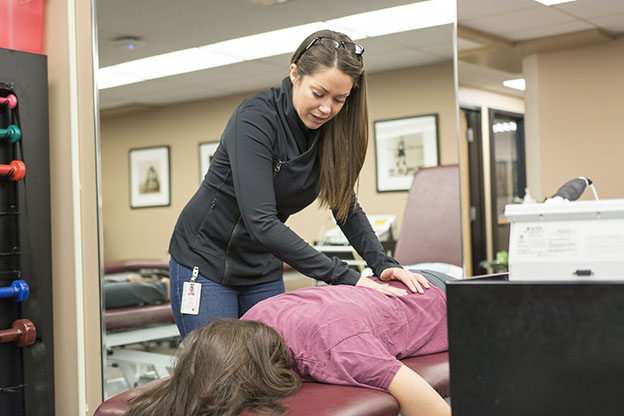Q and A with Pan Am physical therapist Dianna Moulden

Former soccer player and current physical therapist Dianna Moulden on her role as Lead Medical Practitioner for Pan Am soccer.
What is physical therapy?
I would describe physical therapy as a profession that has a deep understanding of human anatomy and how all the bones, joints, ligaments, muscles and tendons act together to produce movement and can ultimately contribute to injury. We are able to utilize hands on techniques, modalities and prescribe stretches and exercises to help heal from an injury, return to activity and prevent a reoccurrence of injury.
How did you become interested in physical therapy as a career?
I always knew I wanted to be involved in healthcare in some capacity and I have always loved being involved in sports. It’s funny, I just recently pulled out my Grade 13 high school yearbook at my parent’s house and under my “Probable Destination” I had actually listed, “Traveling with a professional sports team as a physical therapist”. Apparently I had an interest in physical therapy and sports long before I think I really knew what it was. It wasn’t until I finished my undergraduate degree and was given an opportunity to work as a kinesiologist in a physiotherapy clinic that I really knew physiotherapy was the career for me.
You’ve been quite involved with the University, completing your undergrad and continuing to grow in your career. What inspired you to specialize in sports therapy?
Working with athletes is incredibly rewarding. In the field of physical therapy you want nothing more than to work with a motivated population. An active population has the desire to get better as quickly as possible and will work with you to achieve that goal. In addition to that, it is easy to become emotionally involved in sports. To watch teams and athletes leave it all on the field, leaves you with a feeling that you want to do anything you can to help get them back on the field and keep them there. Those reasons, combined with my 6 years of school at McMaster, made it an easy decision to get involved and continue to specialize in sports therapy at McMaster.
What made you choose McMaster?
For many of the reason listed above. Having grown up in Ancaster and feeling the influence of the McMaster community, I knew once I was accepted to Kinesiology in 2002, there was nowhere else to go but McMaster. The connections I made during my undergrad and master’s degrees created a feeling that only someone a part of the McMaster community can accurately put into words. I think the phrase “I bleed maroon” is appropriate. I am eternally grateful McMaster chose me, and took a chance on me to be honoured with working with their teams! It is honestly the best job!
What has been the most challenging physical issue or ailment you have dealt with when working on McMaster’s soccer players?
The dreaded ACL! We have had 6 significant ACL injuries with our women’s soccer team in the last 2 years. As a therapist, there is nothing worse than seeing the “plant and twist” mechanism and then seeing a player go down on the field. ACL tears require surgery, an intense rehabilitation process and usually 9-12 months of therapy before fully returning to sport. As you can imagine this can be a devastating injury for an athlete.
What are your initial thoughts when a player attains an injury and you are approaching them on-field?
Truthfully, I am hoping it is not a serious injury and I am just trying to stay calm myself so that I can be a trusting and calm presence on the field for the athlete. That also helps to keep my head clear so I can appropriately assess the athlete.
You’re at the Pan Am Games as a Medical Practitioner, what exactly does your role entail?
Providing medical coverage, in physical therapy terms, to various teams during practices, games and within the physical therapy clinic. It can require taping, massage and treatment before practice and games, on field medical coverage during practice and games and/or assessment/treatment of injuries following practices or games.
What does a day in your Pan Am schedule look like?
The shifts are typically 8+ hours in length, so you will usually oversee a few teams practicing at your venue throughout the course of your shift. During both practice and games, should a team not have a medical staff traveling with them you would be responsible for pre-activity treatment, taping or strapping. During the event you are responsible to monitoring for medical emergencies or on-field injuries. Following the event, just taking care of whatever the athletes need in terms of icing, or treatment of previous injuries or injuries sustained during the game
How do you remain current on topics in sports therapy?
I am constantly taking courses! I am currently taking another Masters degree in Clinical Science specializing in Manipulative Therapy, which upon completion will give me the designation of a manual therapist. I have many mentors within the sports medicine community and I am constantly visiting their clinics, shadowing them and discussing cases. Additionally, I am constantly reading articles and listening to podcasts from experts in the field to stay on top of what is going on in the sports medicine world!

